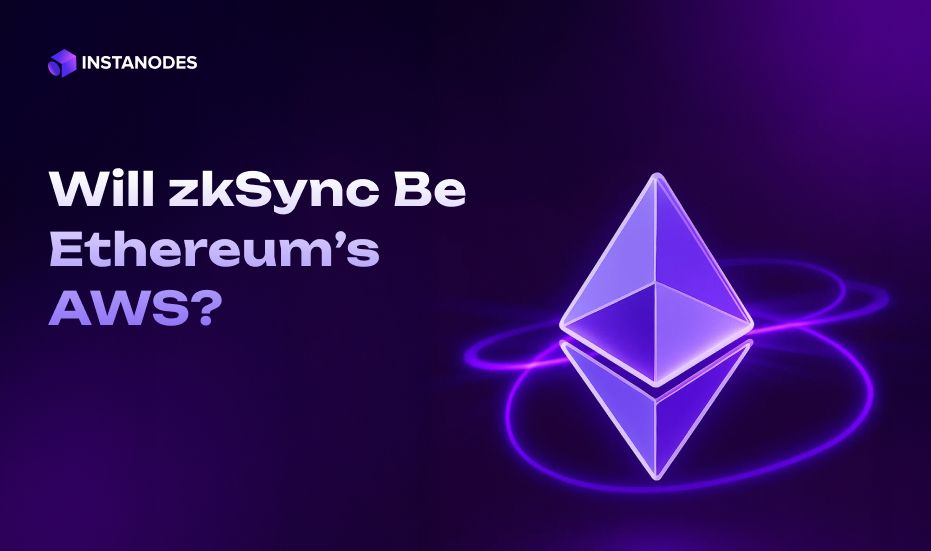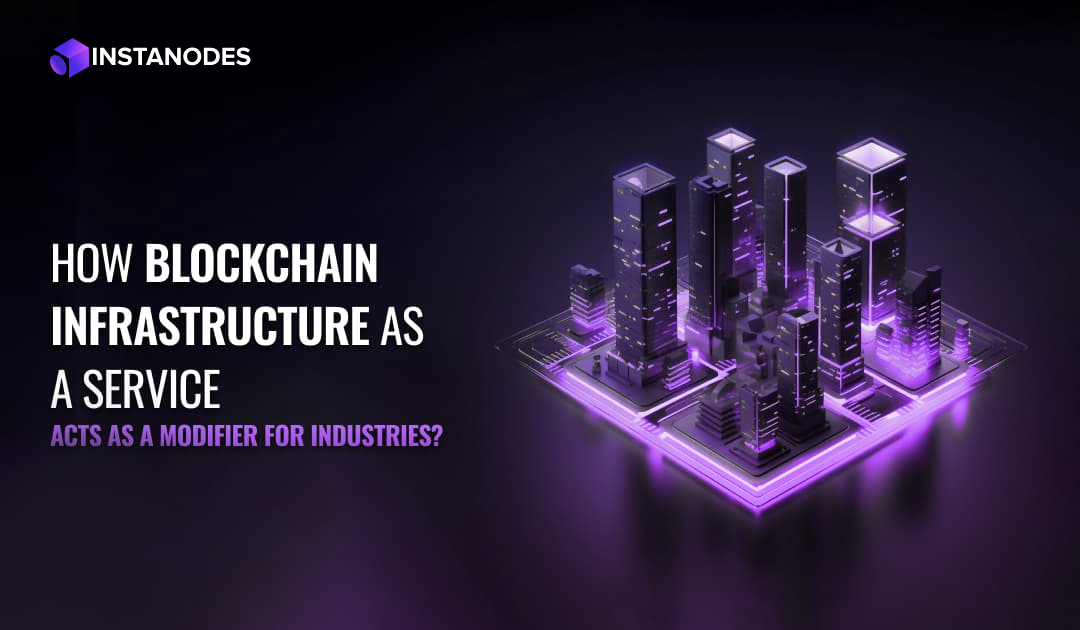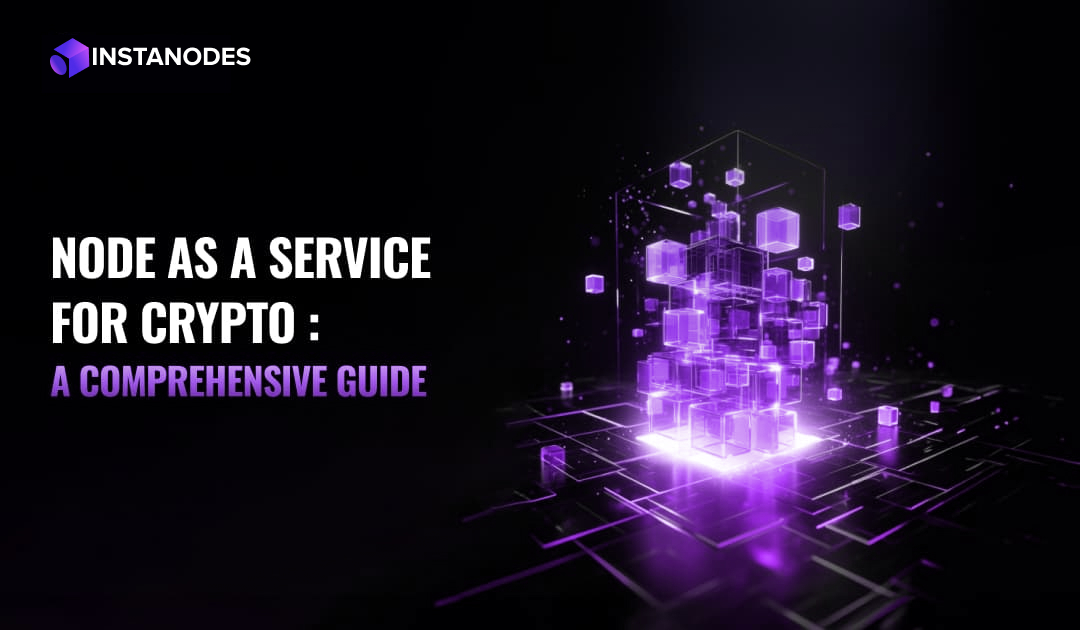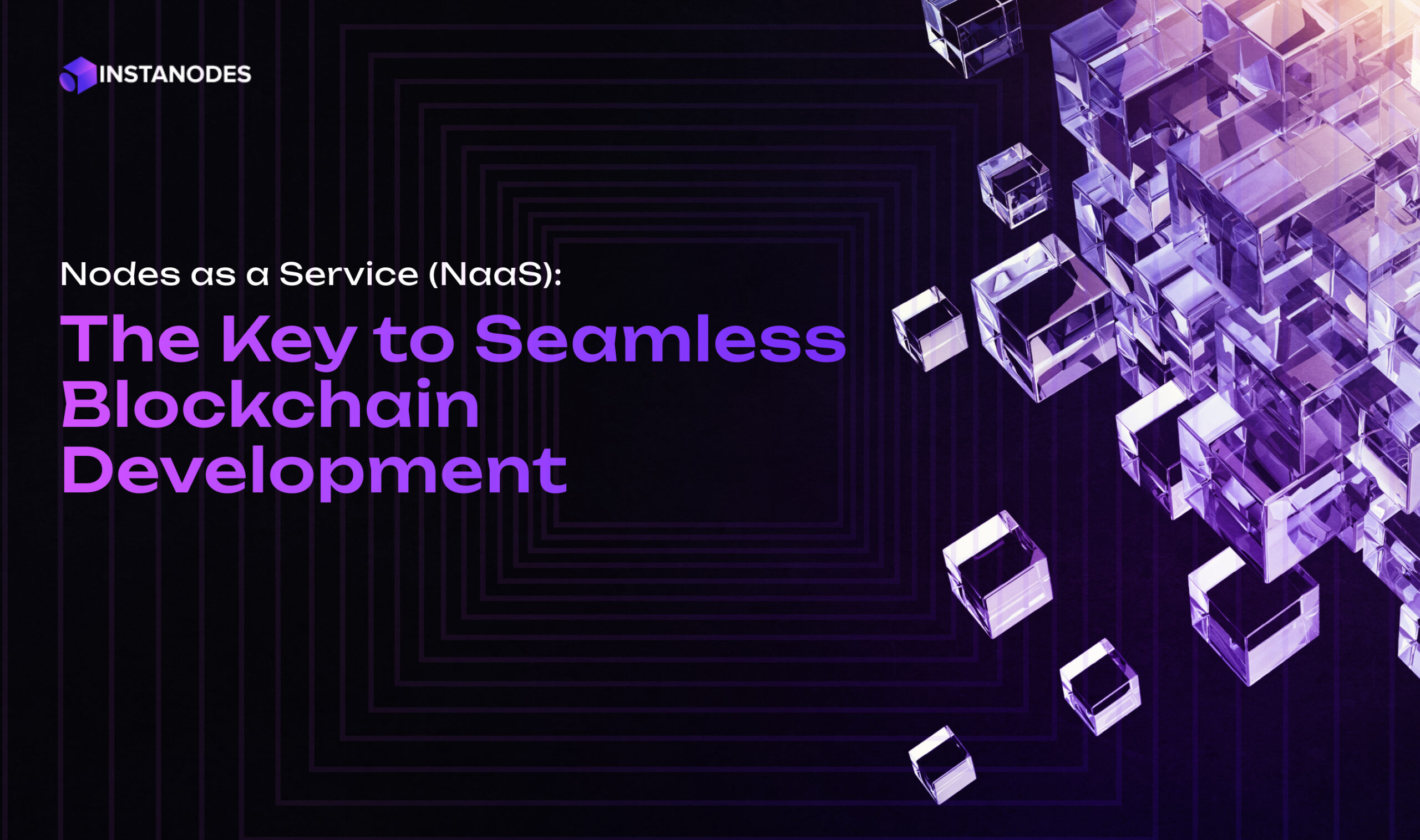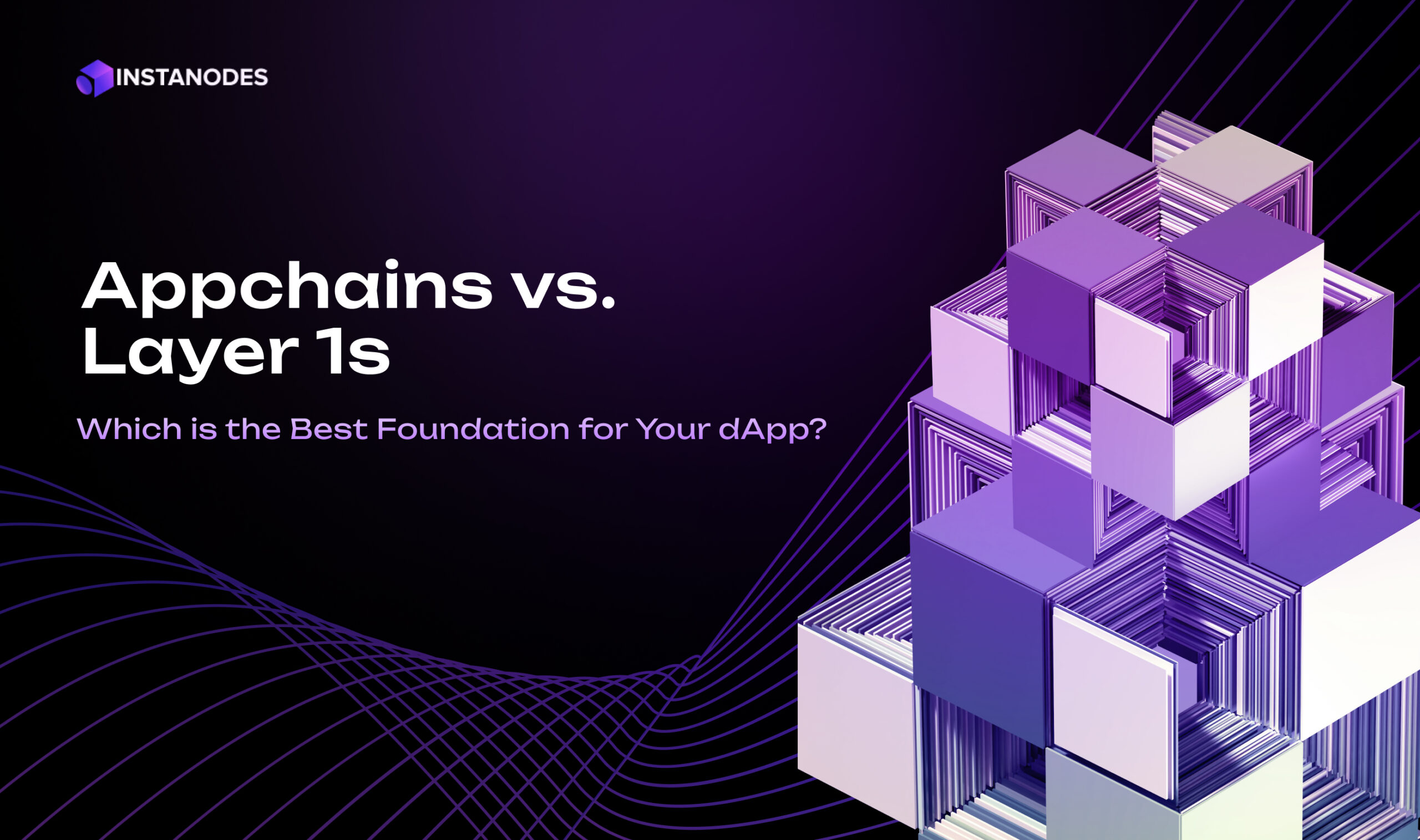Anyone who’s tried using Ethereum during peak traffic knows the pain points all too well. According to Ycharts, transaction fees have reached 0.5219 ETH (equivalent to 2,608.43 USD or more) for simple swaps. At the same time, confirmation times may stretch into several minutes, and a user feels more like navigating a complex financial instrument than using a modern application. These obstacles have pushed users and developers towards rollups in blockchain, radically changing the way we consider blockchain infrastructure.
While the larger move towards blockchain rollups appears inevitable, the real battle is deciding which platform will be the leading contender. zkSync rollup has insidiously placed itself not merely as another scaling solution, but as something much more ambitious: the underlying layer that can enable much of Ethereum’s future ecosystem.
The parallels to Amazon Web Services’ rise in cloud computing are striking, but the question remains whether zkSync can execute on this vision in an increasingly crowded rollup landscape.
From Ethereum’s Congestion Crisis to zkSync’s Rollup Revolution
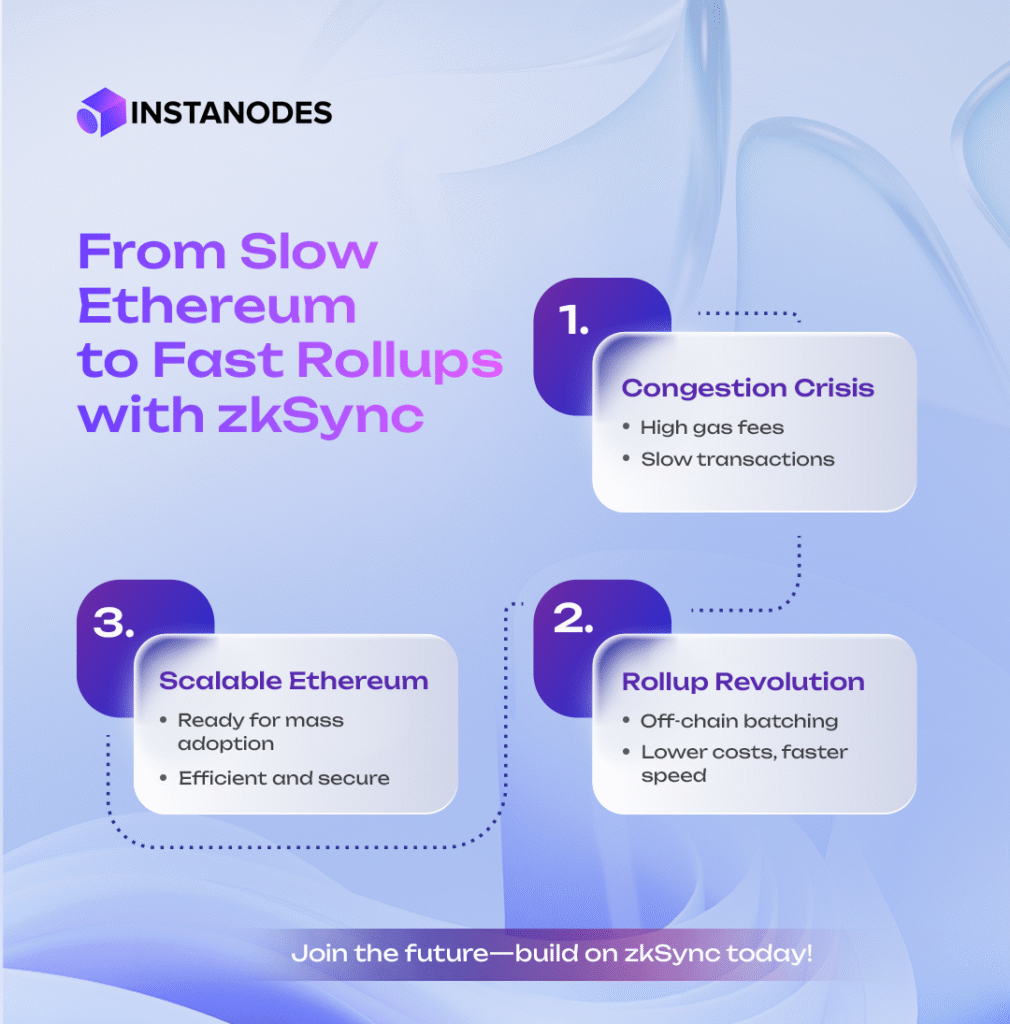
Ethereum’s scalability issues are well-documented, but to appreciate zkSync’s positioning, one needs to study some salient factors:
The Scale of the Problem: Transaction fees routinely surge into double digits and throughput restrictions limit user experience, leading to a bottleneck that increases with the network’s popularity.
Zero-Knowledge vs. Optimistic Approach: Contrary to optimistic rollups that presuppose transactions to be valid until proven otherwise, zkSync rollup uses zero-knowledge proofs to cryptographically certify transaction validity, obviating protracted dispute phases.
EVM Compatibility Without Compromise: Whereas other blockchain rollups have compromised between compatibility and performance, zkSync has walked a line that offers both complete Ethereum compatibility and zero-knowledge advantages.
Technical Moat Development: Years of cryptographic research have produced custom zero-knowledge circuits optimized for Ethereum Virtual Machine operations, creating a foundation that competitors struggle to replicate.
This technical architecture of zkSync is more than simply one of the trusted rollups in blockchain that scales. It’s the groundwork for zkSync’s larger infrastructure goals. The fact that the platform can provide near-instant finality while being fully compatible with EVM has drawn high developer interest and left it as a real threat to long-term ecosystem hegemony.
The Hyperchain Vision: zkSync’s Multi-Chain Ecosystem Strategy
zkSync’s hyperchain architecture represents a paradigm shift that extends far beyond traditional layer-2 scaling. The strategy encompasses several interconnected elements:
Specialized Chain Deployment: You can deploy custom zkSync instances tailored to specific use cases. For example, gaming applications optimized for high-frequency microtransactions, DeFi protocols prioritizing security and composability.
Unified Security Model: All hyperchains share Ethereum’s underlying security guarantees through a common settlement layer, avoiding the liquidity and security fragmentation that plagues other multi-chain approaches.
Network Effect Amplification: Each new hyperchain deployment strengthens the overall ecosystem, creating a virtuous cycle where growth accelerates rather than cannibalizes existing activity.
Value Capture Expansion: Rather than competing for fixed transaction fee pools, zkSync can capture value across multiple verticals simultaneously as the ecosystem expands.
The economic implications of this model are profound. Traditional blockchain rollups compete within constrained markets, but zkSync’s hyperchain approach creates an expanding addressable market. Each specialized chain that launches strengthens the overall network effect, making it increasingly difficult for competitors to challenge the platform’s growing ecosystem advantages.
Developer Adoption Wars: Why zkSync is Betting on Native Account Abstraction
The competition for developer mindshare will ultimately determine which blockchain rollup achieves lasting dominance. zkSync’s focus on account abstraction addresses several critical adoption barriers:
User Experience Revolution: Account abstraction eliminates the distinction between externally owned accounts and smart contracts, enabling developers to create user experiences that rival traditional web applications.
Payment Flexibility: Users can pay transaction fees in any token, implement custom signature schemes, and benefit from programmable account recovery mechanisms—all native features rather than complex workarounds.
Developer Experience Advantage: While other rollups in blockchain require developers to implement complex solutions to achieve similar functionality, zkSync rollup makes these capabilities available out of the box.
New Application Categories: Social recovery wallets, subscription-based services, and programmable spending limits become trivial to implement, enabling innovation that remains complex on other platforms.
Mainstream Adoption Readiness: As the blockchain industry shifts toward mainstream adoption, platforms that can abstract away technical complexity while maintaining decentralization will capture the largest market share.
This timing appears prescient. The platforms that successfully bridge the gap between blockchain capabilities and mainstream user expectations will likely dominate the next phase of industry growth. zkSync’s early investment in native account abstraction positions the platform to benefit from this critical transition.
Deploy On zkSync Rollup Today
Deploy on zkSync Rollup today—upgrade your Web3 experience with seamless Layer 2 power.
Beyond Scaling: zkSync’s Play for Cross-Chain Interoperability Dominance
The future of blockchain infrastructure will likely be multi-chain, with zkSync rollup positioning itself as the central hub in this interconnected ecosystem. Their approach to cross-chain functionality encompasses several strategic elements:
Zero-Knowledge Bridge Advantages: The cryptographic proofs that secure zkSync transactions can also verify state transitions across different blockchain networks, enabling more efficient and secure cross-chain bridges compared to traditional multi-signature approaches.
Protocol-Level Interoperability: Rather than treating cross-chain functionality as an afterthought, zkSync builds interoperability features at the protocol level, creating a more robust foundation for multi-chain applications.
Collaborative Ecosystem Strategy: Partnerships with other blockchain networks and support for cross-chain liquidity pools suggest a collaborative rather than purely competitive approach to ecosystem growth.
Expanded Value Capture: By positioning itself as the preferred hub for cross-chain activity, zkSync can capture transaction fees and value from the broader blockchain ecosystem rather than just native applications.
Generalized Message Passing: Investment in infrastructure that enables seamless communication between different chains positions zkSync rollup as essential middleware in a multi-chain future.
This comprehensive interoperability strategy addresses a fundamental market reality: isolated scaling solutions will ultimately lose market share to more connected alternatives. zkSync’s early investment in cross-chain capabilities could prove decisive as the blockchain ecosystem continues to fragment and specialize.
The Cloud Analogy: What It Really Takes to Be Ethereum’s AWS
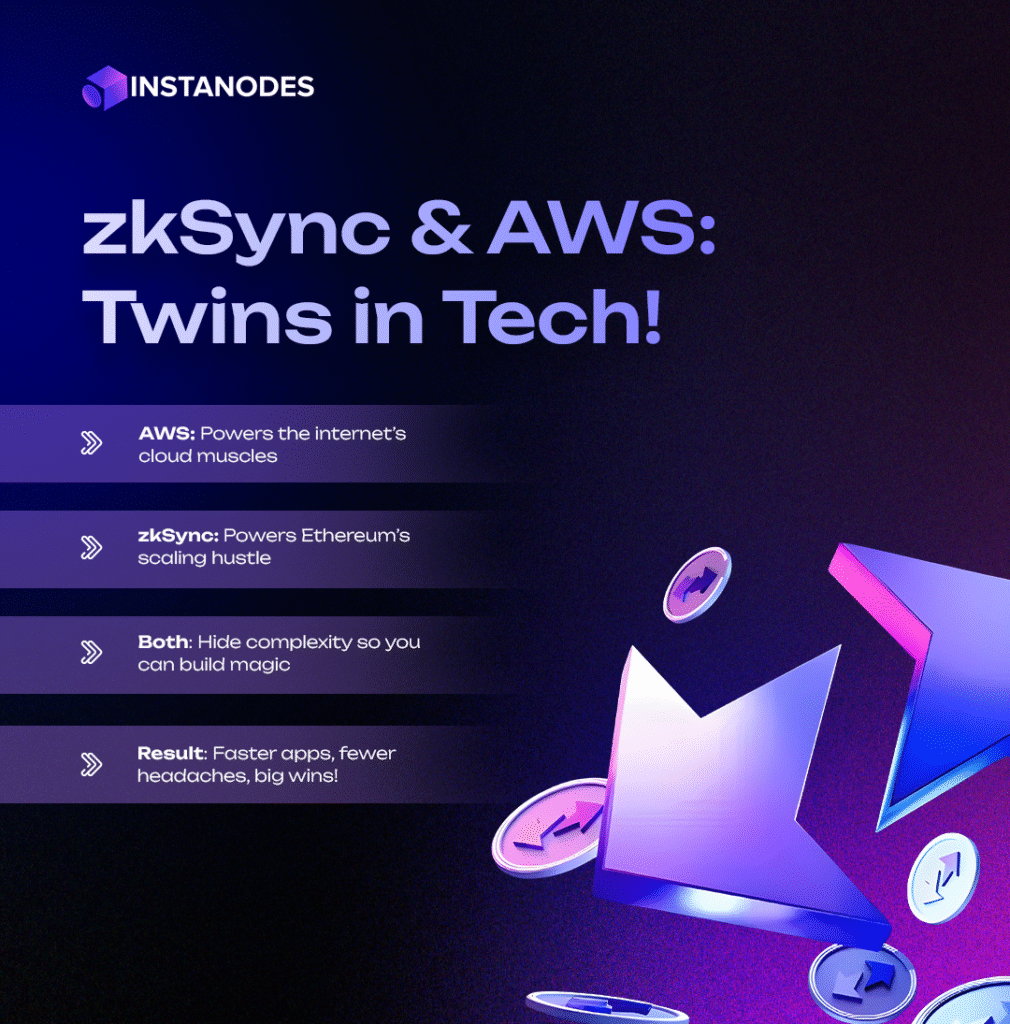
The comparison between zkSync and Amazon Web Services reflects a fundamental shift in blockchain infrastructure delivery. Examining AWS’s success reveals several critical requirements for achieving dominant platform status:
Superior Economics: AWS succeeded because cloud computing proved more cost-effective than on-premise infrastructure for most use cases. zkSync must consistently deliver lower transaction costs and better performance than direct Ethereum usage or competing layer-2 solutions.
Comprehensive Ecosystem Development: AWS’s dominance stems not just from core computing services but from its comprehensive ecosystem of complementary tools and services. zkSync’s developer tools, documentation quality, and third-party integrations will determine ecosystem lock-in effects.
Elastic Scalability: AWS’s ability to scale with user demand while maintaining service quality enabled support for everything from startups to enterprise applications. The technical architecture of zkSync rollup must prove capable of similar scalability without compromising security or decentralization.
Network Effect Amplification: AWS benefits from a virtuous cycle where more users attract more service providers, which attract more users. zkSync’s hyperchain model and interoperability features suggest understanding of this dynamic.
Infrastructure Abstraction: Just as AWS abstracted away server management complexity, zkSync must abstract blockchain complexity while providing scalable, secure transaction processing.
The blockchain industry has its own unique traits, like the need for decentralization and open-source development that bring both new possibilities and challenges that cloud computing didn’t face in its early days. To succeed, we must adjust the AWS approach to fit these realities while still focusing on making infrastructure simple and abstracted.
Switch To zkSync Today
Scale your app with zero-knowledge rollups made developer-friendly.
Final Thoughts
Watching zkSync’s path, it is difficult not to sense that we are witnessing something important happening here. The coming together of zero-knowledge tech, careful ecosystem planning, and strategic alignment makes the case for zkSync’s long-term future a strong one. Yet the world of blockchain rollups has proven that technical superiority is not enough to guarantee market leadership.
The real test will come as mainstream adoption accelerates and developers make their platform choices. Will zkSync’s bet on account abstraction prove prescient? Can the hyperchain model deliver on its promise of specialized yet interoperable chains? These questions will likely be answered over the next 12-18 months as the rollup wars intensify.
What’s especially interesting is that zkSync rollup has steered clear of the “build it and they will come” trap that has ensnared numerous blockchain initiatives. Their emphasis on developer experience, user-friendly functionality, and ecosystem partnerships presents a grown-up appreciation for what motivates platform adoption in competitive markets.
The AWS comparison isn’t perfect, but it highlights an important truth that infrastructure plays often require patience, significant capital, and flawless execution. zkSync appears to understand this reality and is building accordingly. Whether they can execute on this vision while fending off well-funded competitors remains the defining question.
As the rollup-centric future of Ethereum takes shape, one thing seems certain that the winning rollups in blockchain will be those who best balance technical innovation with practical adoption strategies. zkSync is a serious contender in this high-stakes infrastructure race.
Looking to explore zkSync and other cutting-edge blockchain infrastructure? Instanodes provides enterprise-grade blockchain infrastructure and node services to help developers and businesses navigate the rapidly evolving rollup ecosystem. Reach us to get started!
